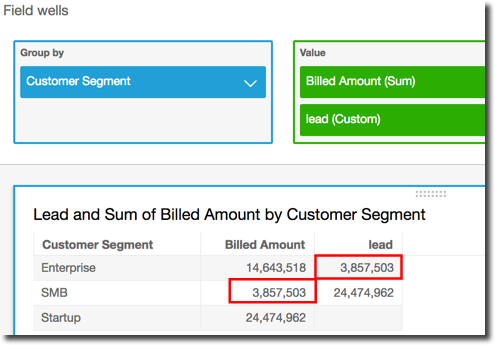lead
The lead function calculates the lead (following) value for a measure based on
specified partitions and sorts.
Syntax
The brackets are required. To see which arguments are optional, see the following descriptions.
lead (measure ,[ sortorder_field ASC_or_DESC, ... ] ,lookup_index, ,[ partition_field, ... ])
Arguments
- measure
-
The measure that you want to get the lead for. This can include an aggregate, for example
sum({Sales Amt}). - sort order field
-
One or more measures and dimensions that you want to sort the data by, separated by commas. You can specify either ascending (
ASC) or descending (DESC) sort order.Each field in the list is enclosed in {} (curly braces), if it is more than one word. The entire list is enclosed in [ ] (square brackets).
- lookup index
-
The lookup index can be positive or negative, indicating a following row in the sort (positive) or a previous row in the sort (negative). The lookup index can be 1–2,147,483,647. For the engines MySQL, MariaDB, and Amazon Aurora MySQL-Compatible Edition, the lookup index is limited to just 1.
- partition field
-
(Optional) One or more dimensions that you want to partition by, separated by commas.
Each field in the list is enclosed in {} (curly braces), if it is more than one word. The entire list is enclosed in [ ] (square brackets).
Example
The following example calculates the next sum(sales), partitioned by
the state of origin, in the ascending sort order on
cancellation_code.
lead ( sum(sales), [cancellation_code ASC], 1, [origin_state_nm] )
The following example uses a calculated field with lead to display the amount for
the next row beside the amount for the current row, sorted by Customer
Segment. The fields in the table
calculation are in the field wells of the visual.
lead( sum({Billed Amount}), [{Customer Segment} ASC], 1 )
The following screenshot shows the results of the example.
